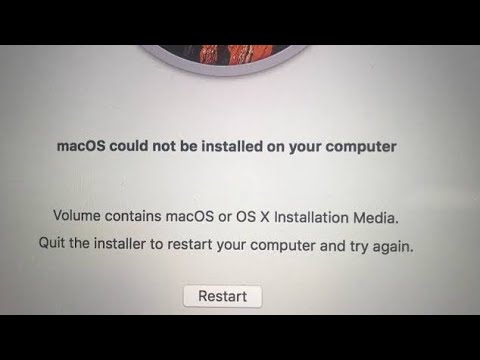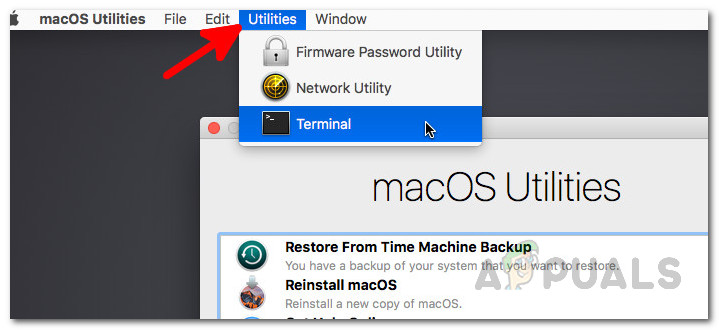HP ProLiant DL385 G7 Catalina. Hey, I get OSX could not be installed on your computer. No packages were eligible for install. Contact the software manufacturer for assistance. I have googled it and found the date issue, which is set correctly on my computer. Trying to install Mojave (not sure why it says OSX) but yeah. This went absolutely fine and I now have a fully indepentent USB Drive which i can simple connect to the PC and the El Captain OS boots up. Case 2: I next tried to use the same bootable USB to install El Capatin on a SATA Drive. I had formated the drive for OS X Extended (Journaled) with Guided Partition Table. Apr 17, 2020 No packages were eligible for the install. Contact the software amnufacturer for assistance. Uf300 prober manual. Quit the installer to restart your computer and try again.' Click to expand. If you're connected to the internet, disconnect it. Re-create the Bootable USB and try installing. Make sure you erase the drive, not the partition. For new-ish OS X installers but ones downloaded before February 18 2016 set the date to February 1, then install OS X, then set the date to the real date. Apple is so amateur hour half-baked these days they didn’t catch a major bug and let a certificate expire, it broke everyones software, apps, OS X installers, everything. Reinstall macOS. Select Reinstall macOS from the utilities window in macOS Recovery, then click Continue and follow the onscreen instructions. Follow these guidelines during installation: If the installer asks to unlock your disk, enter the password you use to log in to your Mac. If the installer doesn't see your disk, or it says that it can't.
Scenario
Requirements

- You have a 'OS X El Capitan.dmg' downloaded. (look for them in torrent.)
- You have a USB drive (USB flash drive) of at least 8 GB of capacity.
- All this process will happen in a OS X environment. (No Windows please.)
Happy path
- Create an install boot drive using the USB drive and the 'OS X El Capitan.dmg'.
- Boot to recovery mode in the USB drive and wipe the hard drive (ALL DATA IN HARD DRIVE WILL BE LOST, DO BACKUP!!!)
- Install 'OS X El Capitan' and have a beer!
Step 1
- Double click on 'OS X El Capitan.dmg' to mount this in 'Finder'. Once mount and open, it should show a name like this 'OS X El Capitan'. Copy this to your 'Documents' folder (Command + C and Command + V, or simply grab the icon and drop it in the 'Documents').
- Insert the USB drive to your computer and rename it like 'INSTALL'.
- Open the terminal and do this command:sudo Documents/OS X El Capitan.app/Contents/Resources/createinstallmedia --volume /Volumes/INSTALL --applicationpath Documents/OS X El Capitan.app
- This command will ask you for your password in order to proceed. It will ask you to confirm with 'Y' for the actions that will happen in the USB drive. Once it start it should take from 15 to 30 minutes or until it finishes coping all installation files to the USB drive and making it able to boot.

Step 2
- Restart your computer and once you hear the sound that is starting press and keep press for a while 'Option (Alt)' key until it shows a menu for select different drives. Select the one that says something like 'OS X 10.11 install drive', and click in the below arrow.
- Wait until it boots up a screen of different options. Now click on the top bar on the screen that says 'Utilities', and then 'Disk Utility..'. Once open this menu, select the first 'Internal' drive (at the left), and then click on 'Erase' and on the confirmation dialog enter in the highlighted input name 'Macintosh' and then click 'Erase'. Wait until it finish doing this process. Now go to the top bar in the screen and click on 'Disk Utility' and the 'Quit Disk Utility'.
- Now it should take you to the same screen when it boot up.


Step 3
- We are ready to install but this step is the most critical one because of different errors that can happen so lets do it in way that whatever error happen we can keep trying to install.
- Click on the top bar on the screen that says 'Utilities', and then 'Terminal ..'. Once the terminal is open do this command:
installer -verbose -pkg /Volumes/Mac OS X Install DVD/Packages/OSInstall.mpkg -target /Volumes/Macintosh - The installation happens in text mode, so be patient until it finishes. At this time 2 types of error might happen:
A. 'This copy of the Install OS X El Capitan application can't be verified. It may have been corrupted or tampered with during downloading.'
B. 'OS X could not be installed on your computer. No package were eligible for install. Contact the software manufacturer for assistance. Quit the installer to restart your computer and try again. Restart'
Both errors have the same solution and is very easy (and very crazy). So whenever one of this errors happens the installation stops. So we need to change the date of the computer to a year when 'OS X El Capitan' were released (don't ask me why), just type something like this:
date 101407002015
or date 101407002016
after that type command
date
to check that the date is in 2015 or in the second case 2016.
and then try again the installer command in step 2 in the terminal (installer -verbose etc..) and wait until the installation finishes (if the hard drive is not a SSD it will take some time, just wait until no more ### symbols). - Now click on the top bar on the screen on the apple symbol and restart the computer. Once you hear the sound that is starting DISCONNECT THE USB DRIVE and have your beer in your hand to configure your fresh Mac or iMac.

OS X could not be installed on your computer.
No packages were eligible for install. Contact the software manufacturer for assistance.
Quit the installer to restart your computer and try again
Portraiture plugin for photoshop crack for mac. Oh dear… When trying to install OS X 10.11 (El Capitan) you may encounter this message. This happens because the the installer certificates are no longer valid when checked against the clock of your mac.
Don’t panic though as this is easily fixed using Terminal, so don’t restart immediately.
- Click Utilities on the menu bar
- Select Terminal
- Type date 062112422016
- Exit Terminal
- Click Restart
No Packages Were Eligible For Install Os X 2017
When you restart the mac and try the installer again it will now believe the certificates are valid and will continue as it should.